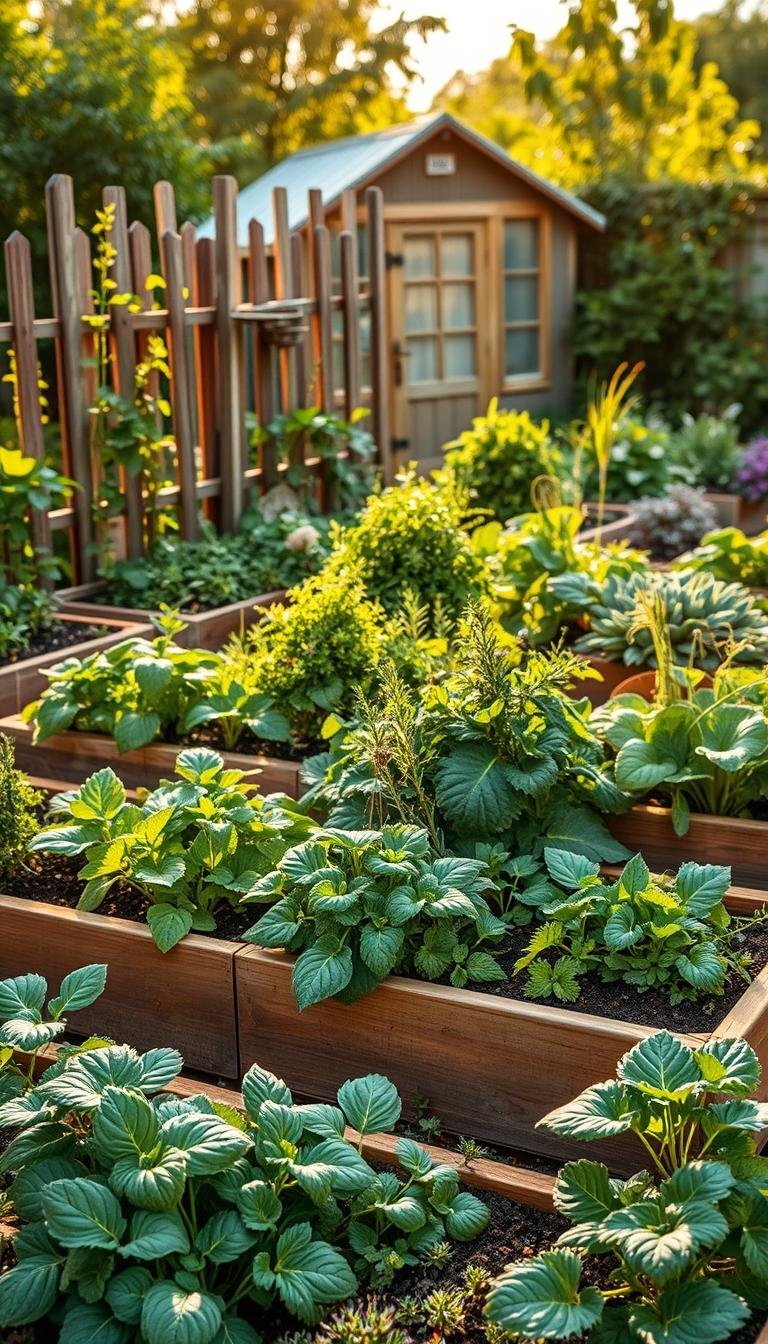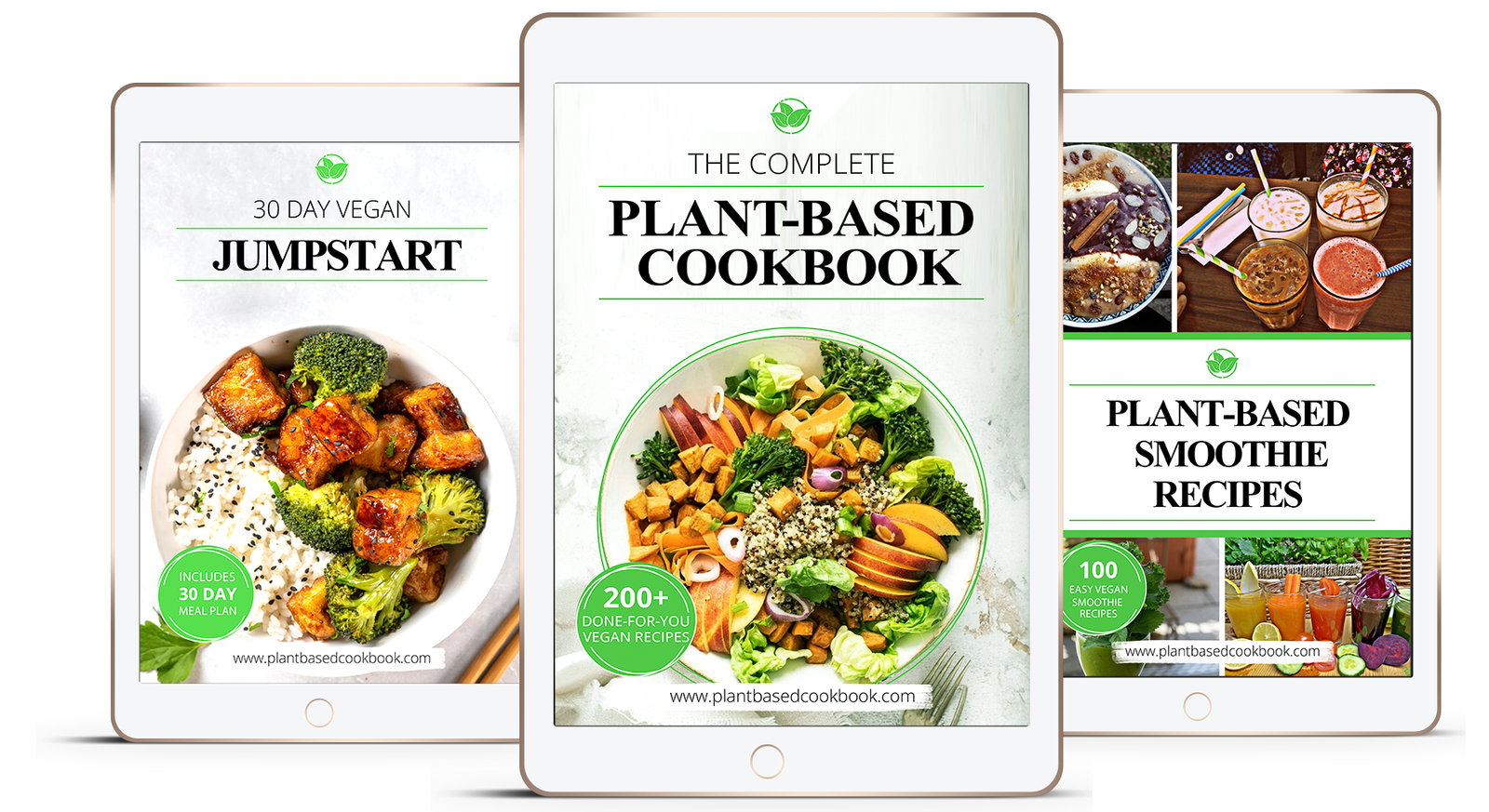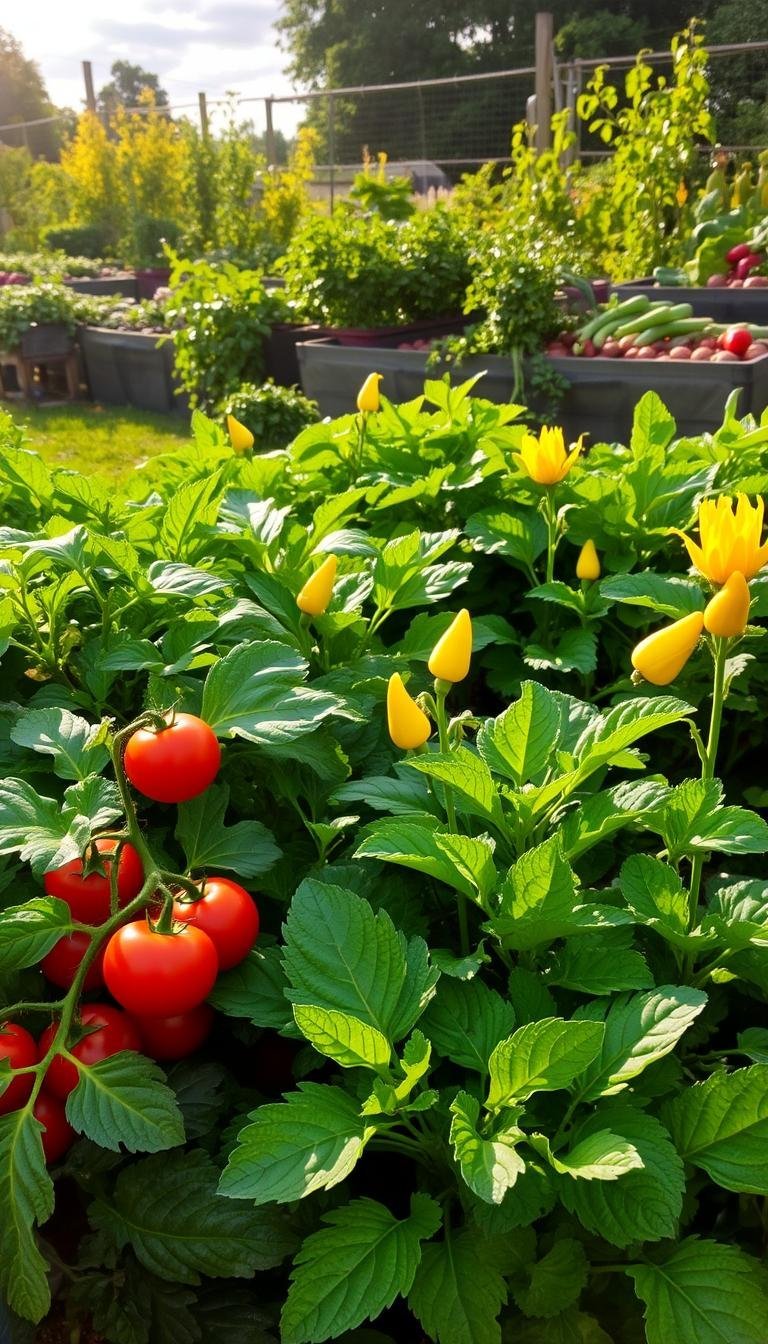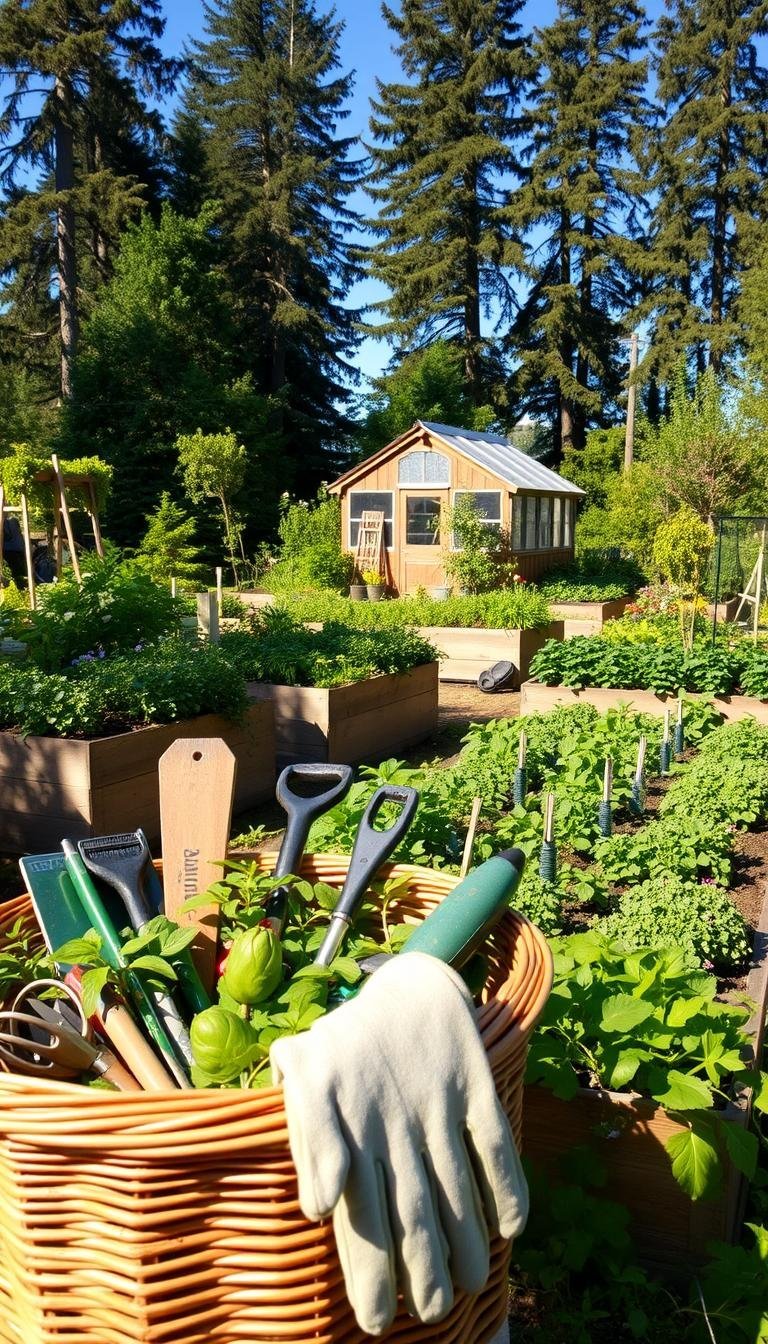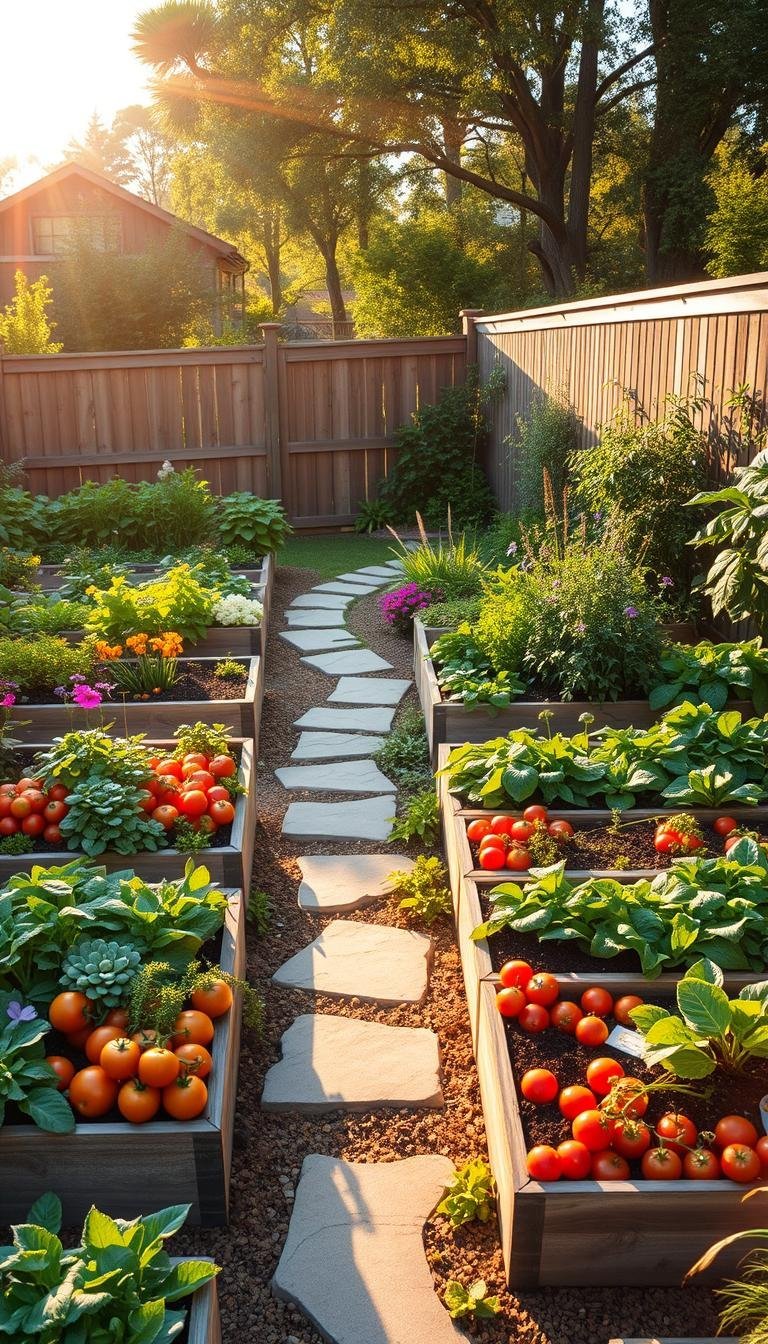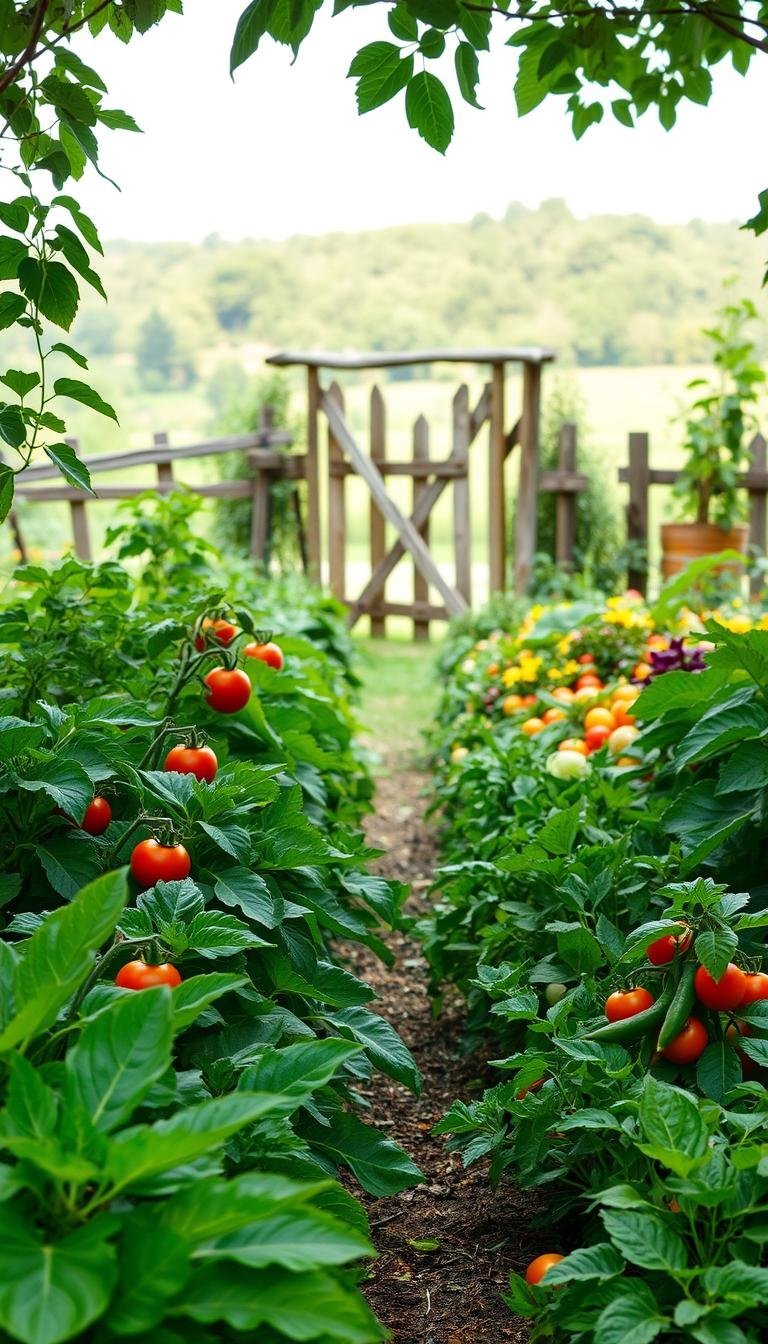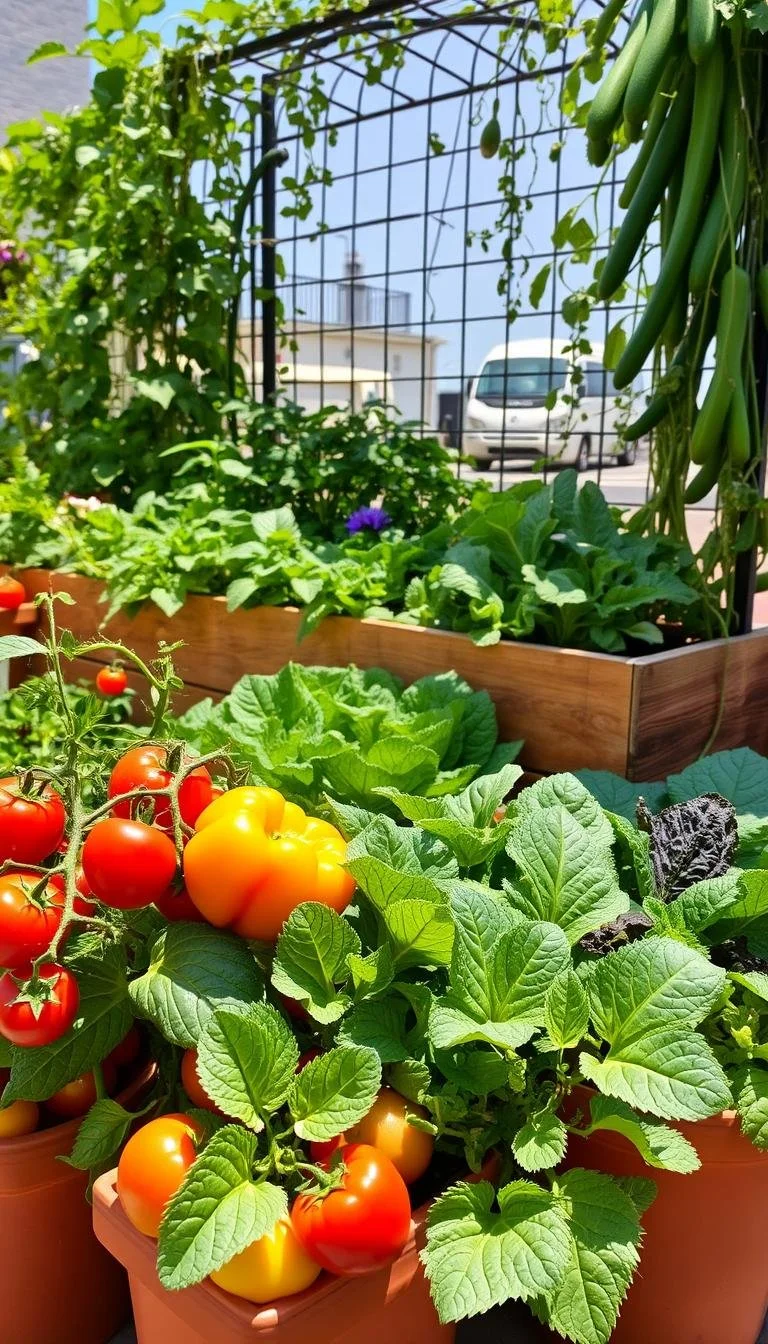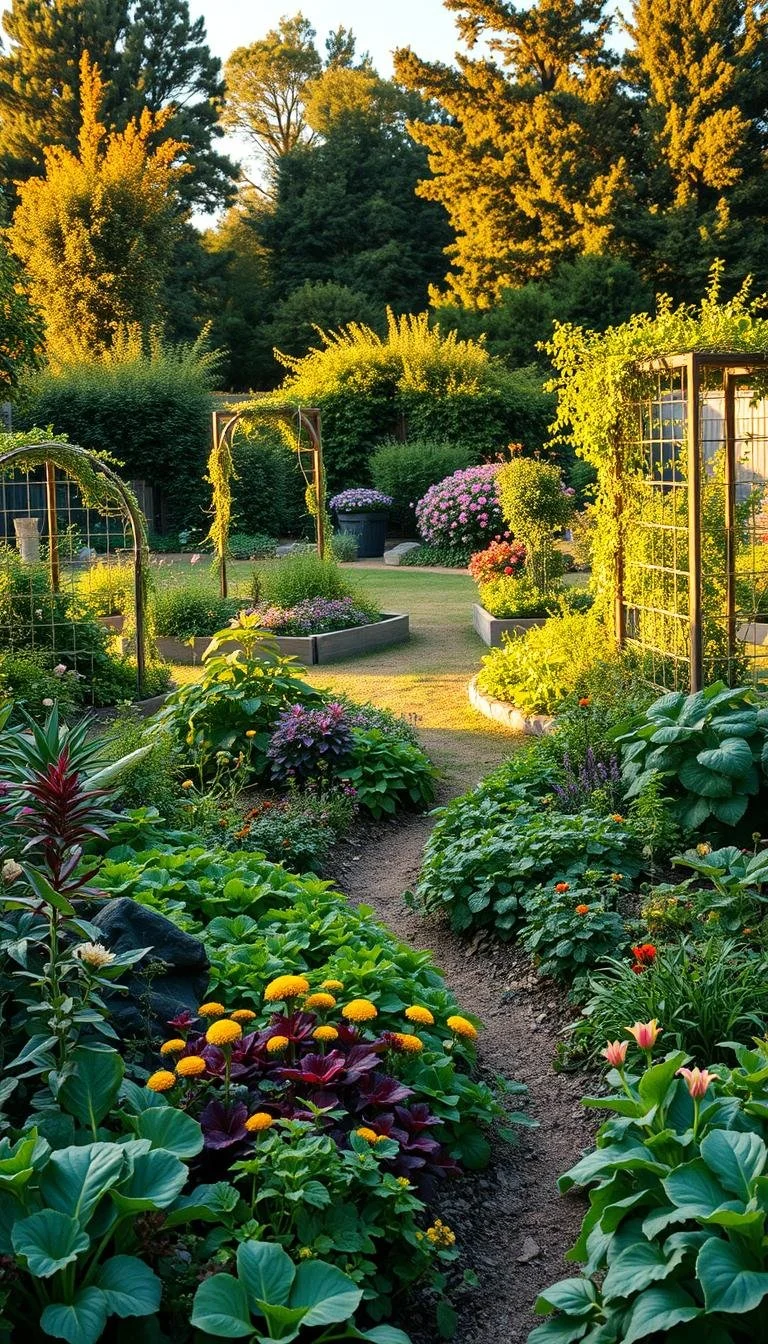(Hey! Some links in this post may be affiliate links — meaning I may earn a small commission if you buy through them, at no extra cost to you. As an Amazon Associate, I earn from qualifying purchases. I only share products I genuinely love and think you’ll find useful too. Read the full disclosure here).
Starting an herb vegetable garden is easier than you think! You can grow your own herbs and veggies, no matter if you have a backyard, balcony, or just a sunny windowsill. This guide will help you create a thriving garden, even if you’re new to gardening. Imagine picking fresh basil for pasta or mint for iced tea right from your own space.
Learning to start an herb vegetable garden is simple. This guide will walk you through everything from choosing plants to harvesting. Growing your own herbs saves money, makes meals better, and connects you to nature. Let’s turn that empty corner of your yard—or a few pots—into a productive garden today!
🌿 Want to Take Your Garden to the Next Level?
If you're serious about growing your own food and becoming more self-reliant, The Self-Sufficient Backyard is a must-read...
🌱 Learn MoreContents
- 1 Why Start an Herb Vegetable Garden?
- 2 Choosing the Right Location
- 3 Essential Herbs to Grow for Beginners
- 4 Planning Your Garden Layout
- 5 Soil Preparation Techniques
- 6 Planting Your Herbs
- 7 Ongoing Care for Your Herb Garden
- 8 Harvesting Your Herbs
- 9 Common Mistakes to Avoid
- 10 Enjoying the Fruits of Your Labor
Why Start an Herb Vegetable Garden?
Discover the benefits of herb vegetable gardens that go beyond fresh flavors. These gardens offer practical rewards for your home, health, and budget.
Benefits of Growing Your Own Herbs
Imagine picking basil for pasta or mint for tea without stepping outside. Homegrown herbs save time and reduce grocery trips. They also cut down plastic packaging waste, making gardening an eco-friendly choice. Plus, nurturing plants boosts pride in self-sufficiency.
Cost Savings Compared to Store-Bought
- A $3 basil seed packet grows herbs worth $50+ annually.
- Cilantro costs 70% less when homegrown versus buying weekly bunches.
- Year-round harvests eliminate impulse buys at farmers’ markets.
Health Benefits of Fresh Herbs
Fresh herbs retain vitamins and antioxidants lost during store transport. Parsley packs iron, while rosemary contains anti-inflammatory compounds. Growing your own ensures no synthetic pesticides touch your food. As nutritionist Emily Green notes in her blog:
“Homegrown herbs deliver peak nutrient density right from stem to spoon.”
These simple plants transform kitchens into sustainable hubs of savings and wellness. Even small spaces like window sills unlock these benefits of herb vegetable gardens for any lifestyle.
Choosing the Right Location
Starting a successful herb and vegetable garden begins with the right spot. Here are some tips for herb and vegetable gardening to help your plants grow well. Sunlight, soil, and water access are key factors.
Sunlight Requirements
Most herbs need 6–8 hours of sunlight each day. Watch your yard at different times to see where the sun hits. Basil and rosemary need full sun, while mint or parsley can handle partial shade.
“Sunlight is the first ingredient in any garden recipe.”
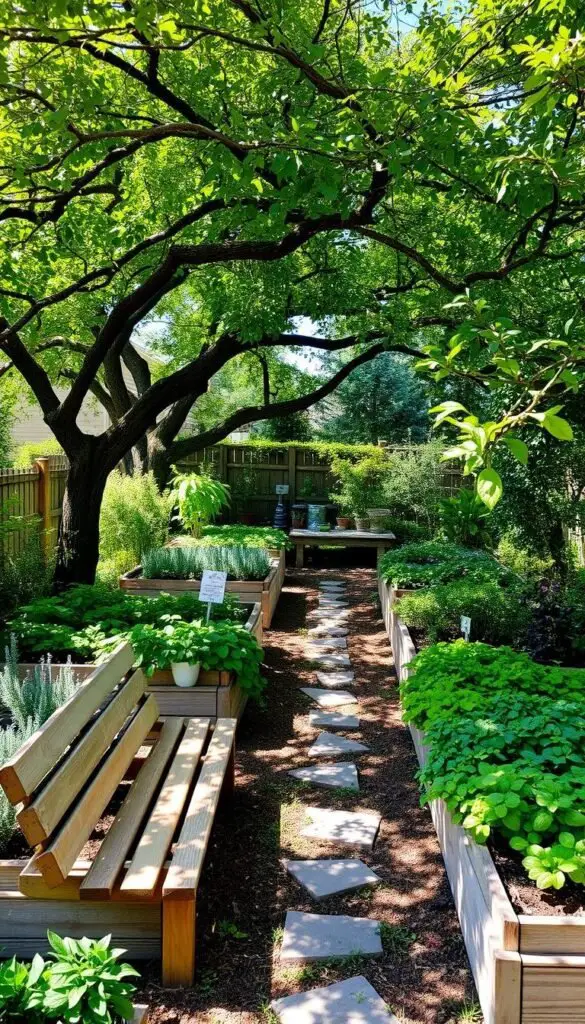
Soil Quality Considerations
Good, draining soil is essential. Test soil by digging a hole, filling it with water, and seeing how fast it drains. It should drain in 4 hours or less.
Add compost or sand to improve poor soil. Use a soil test kit to check pH levels. Most herbs like a pH of 6.0–7.5. Mix in organic matter like aged manure for extra nutrients.
Access to Water
Place your garden near a water source. Drip irrigation or soaker hoses save time and water. Rain barrels collect free water during storms.
Water deeply but not too often to encourage deep roots. Avoid soggy soil—overwatering is a big mistake!
Essential Herbs to Grow for Beginners
Starting with the best vegetables for herb garden combinations ensures your first plants thrive. These four herbs adapt easily to home gardens and pair well with veggies like tomatoes or carrots. Let’s explore each option and how to grow them successfully.
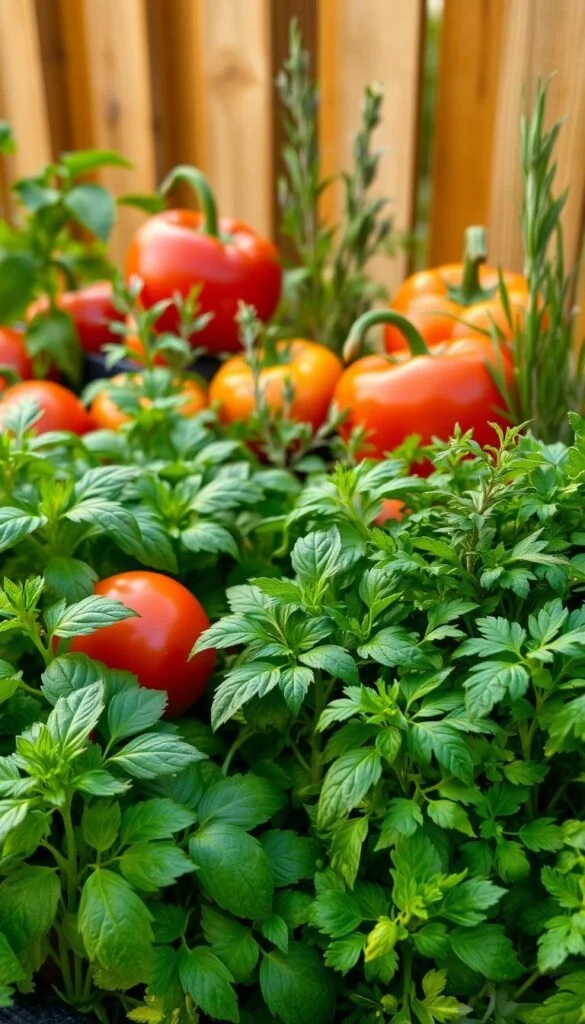
Basil loves sunny spots and warm soil. Genovese, Thai, and purple varieties add flavor to pasta, soups, or pesto. Plant near tomatoes—they repel pests. Water regularly to keep soil moist.
Parsley grows in partial shade and tolerates cooler temperatures. Use its leaves in salads or as garnish. Pair with carrots; their roots don’t compete for space. Harvest outer leaves first to encourage new growth.
Cilantro sprouts quickly but bolts in heat. Sow seeds every few weeks for a steady supply. Its citrusy taste suits salsas and curries. Grow alongside beans or squash to deter insects.
Chives are perennial and thrive in containers or garden beds. Their purple flowers attract pollinators. Plant with strawberries or tomatoes for mutual benefits. Snip leaves from the base to avoid damaging the roots.
“Mixing herbs with veggies like lettuce or peppers creates a balanced ecosystem,” says gardening expert Mary Green. “They save space and protect each other from pests.”
These herbs reward patience and simple care. Pair them with compatible vegetables to boost garden productivity. Remember, consistency in watering and sunlight ensures lush growth. Happy planting!
Planning Your Garden Layout
Designing your herb garden layout ideas is key to a successful garden. It doesn’t matter if you have a balcony or a backyard. Good planning ensures your plants get the right conditions to thrive. Think about space, sunlight, and which plants go well together.
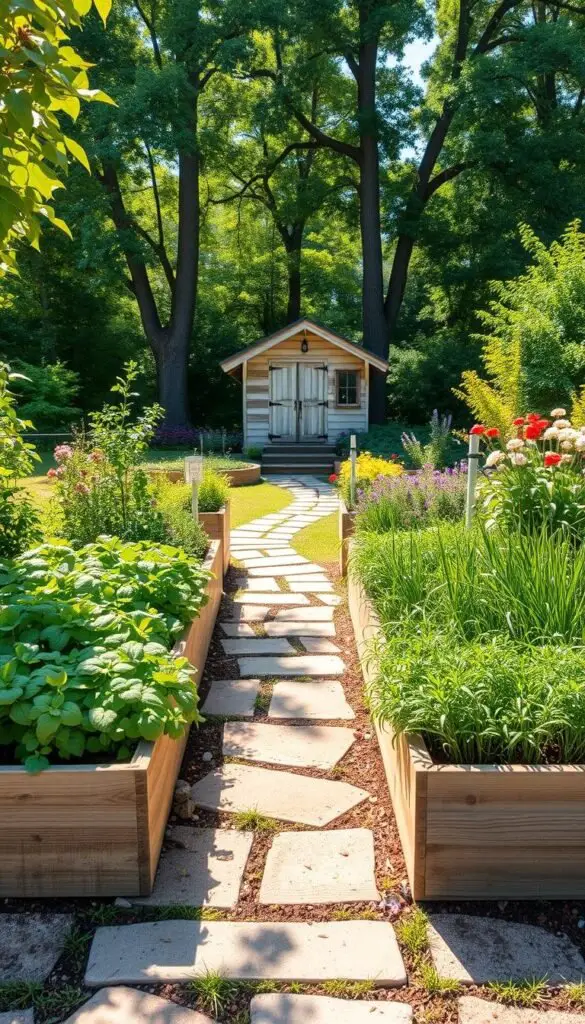
Raised Beds vs. Traditional Rows
Raised beds are great for better drainage and easier soil care, perfect for bad soil. Traditional rows save money and space but need more weeding. Herb garden layout ideas with raised beds are good for those who prefer not to bend down. Rows are better for bigger areas.
- Raised beds: Ideal for clay-heavy soil
- Traditional rows: Easier to expand over time
- Both styles can mix herbs with veggies
Companion Planting Benefits
“Basil near tomatoes boosts growth, while marigolds deter pests,” says the National Garden Bureau. Pairing herbs with veggies creates natural pest barriers and improves flavor. Try rosemary with carrots or chives with broccoli.
Spacing and Arrangement Tips
Make sure plants have enough space. Place tall herbs like fennel at the back to avoid shading others. Clump-forming herbs (cilantro, dill) need 12–18 inches between plants. Paths between sections make harvesting easier.
- Group herbs by water needs (e.g., rosemary with drought-tolerant plants)
- Leave 1–2 feet between rows for easy access
- Rotate layouts yearly to prevent soil depletion
Try containers, vertical structures, or window boxes if space is tight. Every herb garden layout ideas can fit your space. Start small, test what works, and adjust as you learn!
Soil Preparation Techniques
Healthy soil is key for a great garden. For gardening herbs and vegetables, the right soil is essential. It helps plants grow strong. Here’s how to start.
Testing Soil pH
Soil pH affects how plants take in nutrients. Most herbs and veggies do best in slightly acidic to neutral soil (pH 6.0–7.5). Use a home testing kit to check your soil. If it’s too high or low, add lime or sulfur carefully.
“A balanced pH unlocks nutrients for herbs and vegetables.”
Adding Organic Matter
Make your soil better with compost or aged manure. They help with drainage and give nutrients slowly. Here’s what to do:
- Spread 2–3 inches of compost over the garden bed.
- Mix it 6–8 inches deep with a garden fork.
- Wait 2–3 weeks before planting to let soil settle.
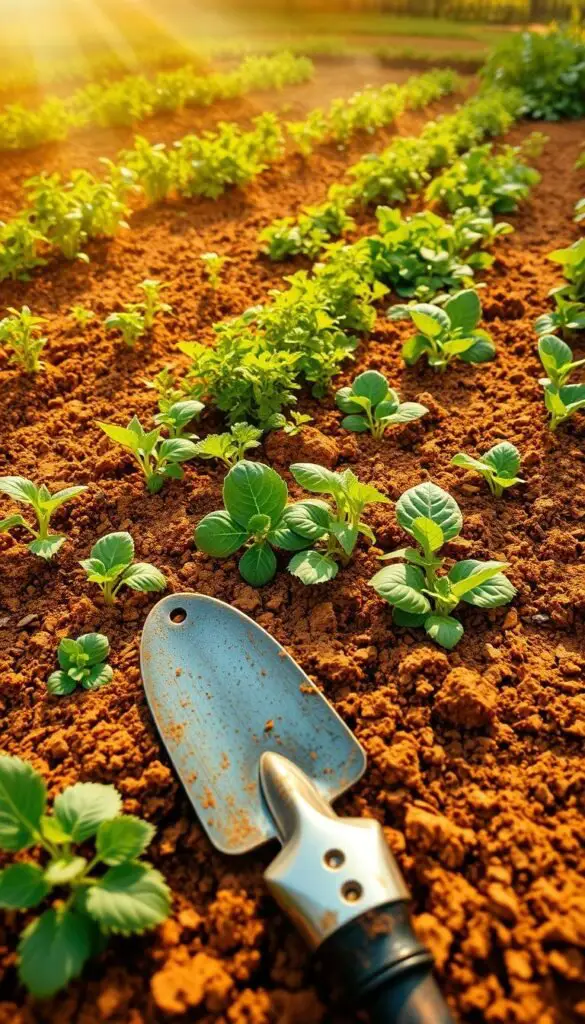
Choosing the Best Fertilizers
Choose fertilizers that help herbs grow without changing their taste. Organic choices like:
- Compost tea
- Fish emulsion
- Seaweed extract
are great for herbs. For veggies, use balanced NPK fertilizers (like 10-10-10) for steady growth. Always follow the instructions to avoid overfeeding.
Planting Your Herbs
Ready to get your hands dirty? Timing and technique are key when growing herbs and vegetables together. Let’s go over the steps to make your garden a success.
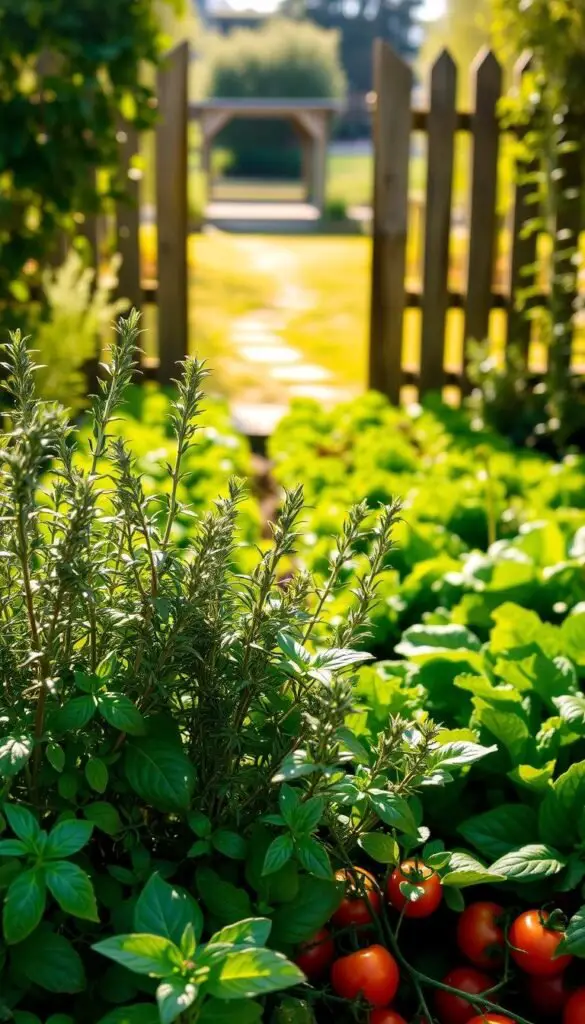
Best Time to Plant
Most herbs do well in spring after the frost is gone. Check your USDA hardiness zone for the right time. Early spring is best for cool-season herbs like parsley with veggies like lettuce. Basil does well with tomatoes in warmer months.
Seed vs. Seedling Decision
- Seeds: Great for cilantro or dill. They’re cheap and offer lots of variety, but take longer to grow.
- Seedlings: Ideal for basil or chives. They grow faster but cost more. Look for healthy starter plants at garden centers.
Tip: Start parsley from seedlings to avoid slow germination.
Proper Planting Depth
Bury seeds 2–3 times their width. Tiny seeds like chive can sit on top of the soil, lightly pressed. When transplanting seedlings, dig holes twice the size of the root ball. Gently spread the roots before filling the soil around them.
Spacing is important! Leave 6–12 inches between plants. This lets roots and veggies grow without crowding.
Ongoing Care for Your Herb Garden
Learning the basics of tips for herb and vegetable gardening helps keep your plants healthy. Regular care makes your garden strong and less work. Here’s how to keep your herbs and veggies in great shape all season.
Watering Guidelines
- Check soil moisture with a finger test: herbs like basil prefer dry soil between waterings, while vegetables need consistent moisture.
- Avoid overhead watering during heat—drip systems or soaker hoses reduce disease risks.
- Adjust frequency based on weather: water deeply once a week in dry spells, twice during extreme heat.
Weed Management Strategies
Prevent weeds early with these steps:
- Mulch beds with straw or compost to block sunlight from weed seeds.
- Hand-pull weeds before they go to seed—gentle tugging avoids disturbing herb roots.
- Use a hoe weekly to cut weeds at the soil line, keeping rows tidy without chemicals.
Pest Control Methods
“Healthy plants resist pests better than stressed ones.”
Try these organic solutions first:
- Companion plant marigolds with tomatoes to deter aphids and nematodes.
- Introduce ladybugs or neem oil sprays for soft-bodied pests like spider mites.
- Make a garlic spray: blend 3 cloves with water, strain, and spray affected leaves.
Regular inspections catch issues early—spend 10 minutes weekly walking your garden beds.
Harvesting Your Herbs
Harvesting your herbs is the rewarding finale to your gardening journey. Timing and technique unlock their best flavors while keeping plants thriving. In your herb vegetable garden, proper harvesting boosts growth and taste. Follow these steps to make the most of every plant.
When to Harvest for Maximum Flavor
For basil, pick leaves before flowers bloom—this keeps flavor strong and growth active. Cilantro leaves are tastiest before the plant bolts; harvest outer leaves regularly. Parsley and chives can be cut weekly, leaving at least one-third of the plant. Morning harvests, after dew dries, lock in freshness best.
Proper Harvesting Techniques
- Cut basil stems just above leaf joints to spur new branches.
- Trim cilantro stems close to the base to delay bolting.
- Snip chive leaves from the base, leaving 2 inches to regrow.
Sharp scissors prevent damage, ensuring plants stay healthy in your herb vegetable garden.
Storing Fresh Herbs
Keep herbs fresh longer with these tips:
- Wrap basil and mint in damp paper towels inside airtight containers.
- Freeze herbs in ice cube trays with water or oil for winter use.
- Hang bundles of thyme or rosemary in a cool, dry spot to dry slowly.
Stored properly, herbs from your herb vegetable garden can flavor dishes months after harvest. Enjoy their freshness year-round!
Common Mistakes to Avoid
Gardening herbs and vegetables is a joy, but even experienced growers face setbacks. Knowing these common errors helps you stay ahead:
Overwatering Issues
Herbs like rosemary or thyme prefer dry soil. Overwatering drowns roots, causing yellow leaves or mold. Test soil moisture by poking it 1 inch deep—if damp, wait 24 hours. Adjust schedules for rain or heat waves to avoid drowning your plants.
Neglecting Weeds
Weeds steal nutrients from herbs and vegetables. Pull them weekly before they go to seed. Mulch with straw or shredded leaves to block weed growth and retain moisture.
Planting Too Close Together
Crowding plants blocks airflow and sunlight. Follow spacing guidelines: basil needs 12 inches, while mint requires 18 inches. Overcrowded plants attract pests and diseases. Use stakes or trellises for vining veggies like peas to maximize space without cramping.
These tips help you avoid common stumbles. Even pro gardeners learn from mistakes—what matters is growing smarter next season!
Enjoying the Fruits of Your Labor
When your herb garden flourishes, the true delight starts. The benefits of herb vegetable gardens go beyond their uses—they bring pride, creativity, and a bond with nature. Here’s how to enjoy your harvest to the fullest.
Cooking with Fresh Herbs
Make meals more flavorful with herbs straight from your garden. Use strong herbs like rosemary early to release their oils. Add light herbs like basil or cilantro at the end for the best taste.
Try making pesto: mix basil, pine nuts, garlic, and olive oil for a tasty pasta dish. It’s a simple way to enjoy your homegrown herbs.
Preserving Herbs for Future Use
Keep your harvest going by freezing herbs in ice cube trays with water or oil. Dry leaves by hanging them in a cool, dark spot for later use in soups or rubs.
Mix herbs into softened butter for the fridge or infuse oils with thyme or oregano. These methods help you enjoy your herbs all year.
Sharing with Family and Friends
Give dried herb blends, vinegar with dill, or small pots of chives as gifts. Host a dinner where your garden’s harvest is the star. Sharing your herbs strengthens bonds and shows that growing plants nourishes more than just food—it builds community.

